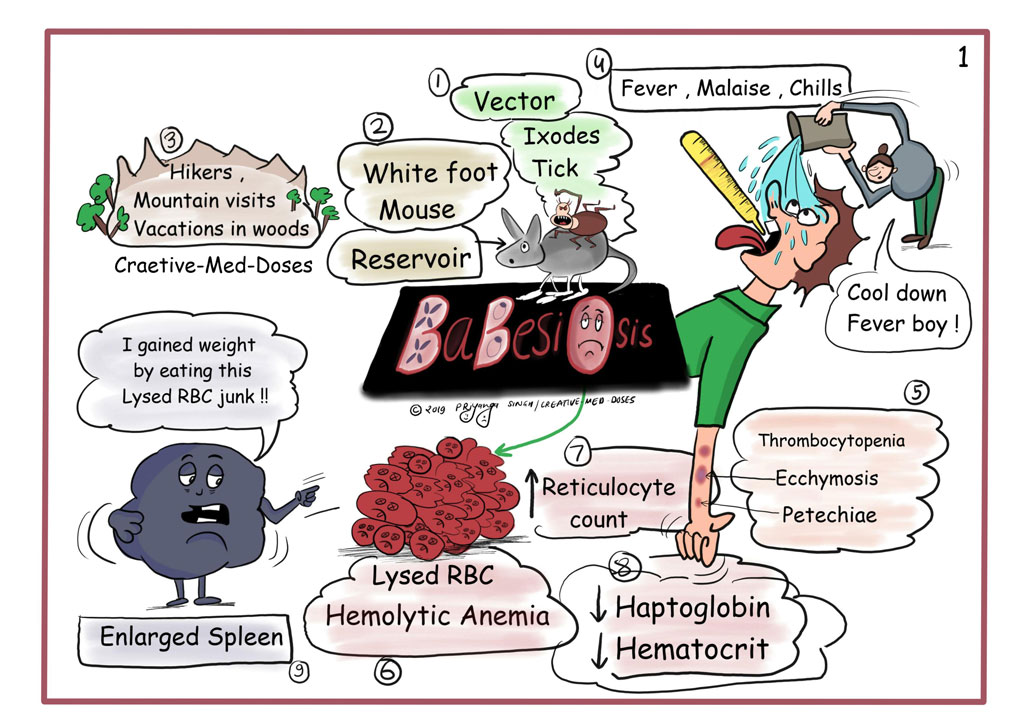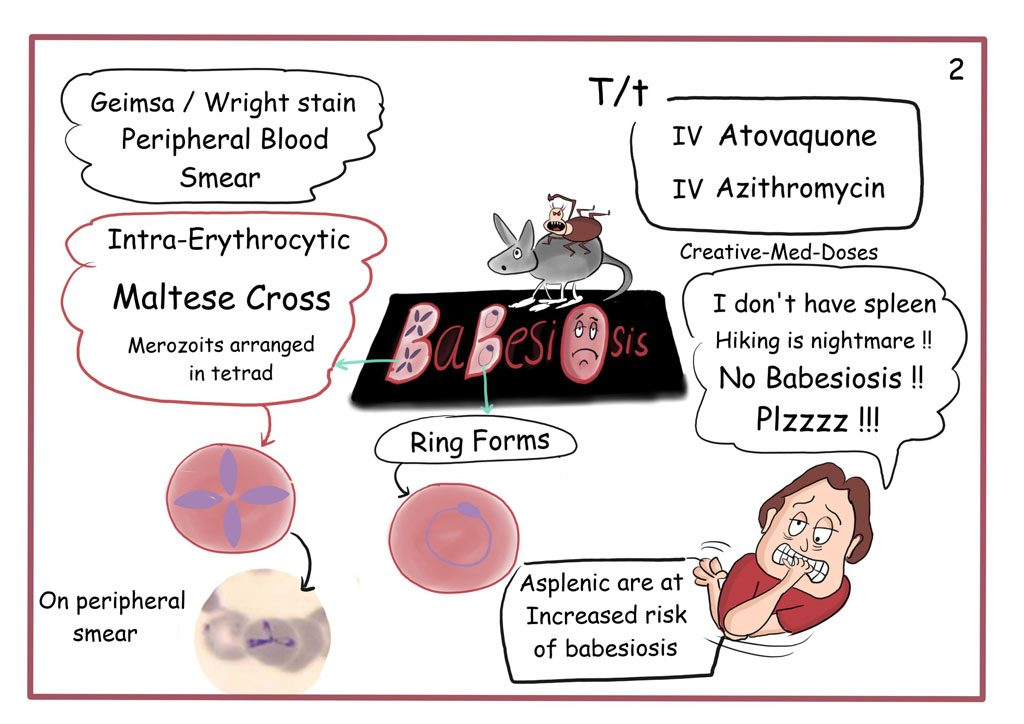Babesiosis


Pathogen: Babesiosis is a tick-borne malaria-like illness caused by intraerythrocytic protozoan Babesia.
Vector: The primary vectors of the parasite are ticks of the genus Ixodes.
Ixodes tick vector for Babesia is the same vector that locally transmits Borrelia burgdorferi,
Which causes Lyme disease.
Reservoir: White footed deer mouse.
Mode of infection: Tick bite (most common) in endemic areas, Infected blood transfusion
Pathogenesis: Entering the host’s bloodstream during the tick bite, the parasite infects RBCs, and trophozoites are produced.
Upon infection of the host erythrocyte, mature B microti trophozoites divide into 2 or 4 merozoites.
When parasites leave RBC, the membrane is damaged, which might be the cause for hemolysis.
Fever, hemolytic anemia, and hemoglobinuria result from Babesia.
Just like malaria, fragments of RBC can cause capillary blockage or microvascular stasis, which leads to liver, splenic, renal, and central nervous system involvement.
Role of Spleen
The cells of the reticuloendothelial system (RES) in the spleen remove damaged RBC fragments from the circulation. RBC destruction results in hemolytic anemia, which explains splenomegaly. The spleen is a critical host defense against babesiosis, that is why asplenic patients have higher incidence and greater severity of babesiosis. The spleen traps the infected erythrocytes, and their ingestion by the macrophages follows.
Patients typically gives a history of travel to an endemic area between May and September. This is the period during which the Ixodes tick is in its infectious nymph stage, and most patients do not recall a tick bite.
Most common presenting symptoms
- Fatigue, malaise, and weakness
- Fever
- Shaking chills
- Diaphoresis
Complications
The complications depend upon the degree of intravascular hemolysis. The main complications are jaundice, hemoglobinuria, and potential renal failure.
Wright or Giemsa stain on thin blood smears:
Wright-stained or Giemsa-stained peripheral blood smears shows intraerythrocytic ring forms with a central pallor, peripheral smears also demonstrate merozoites arranged in a tetrad configuration resembling a Maltese cross. Tetrad forms are pathognomonic of babesiosis.
Exchange transfusion is employed in patients who are profoundly ill with high levels of parasitemia and hemolysis.
Medicine: IV Atovaquone, IV Azithromycin